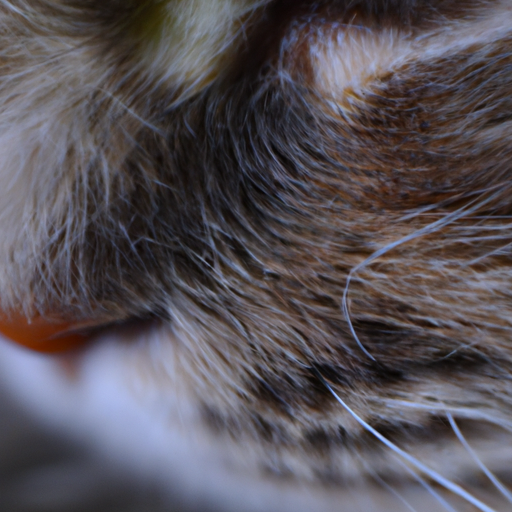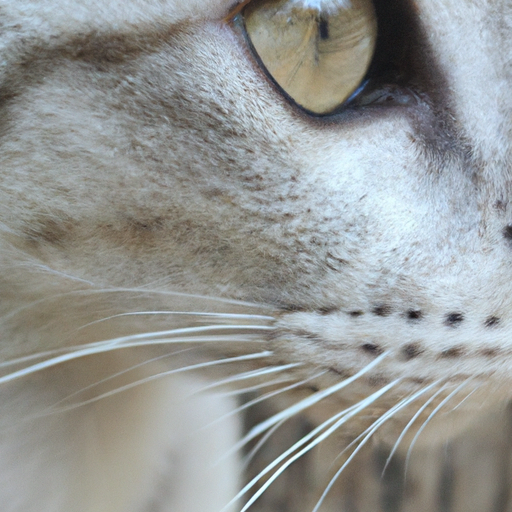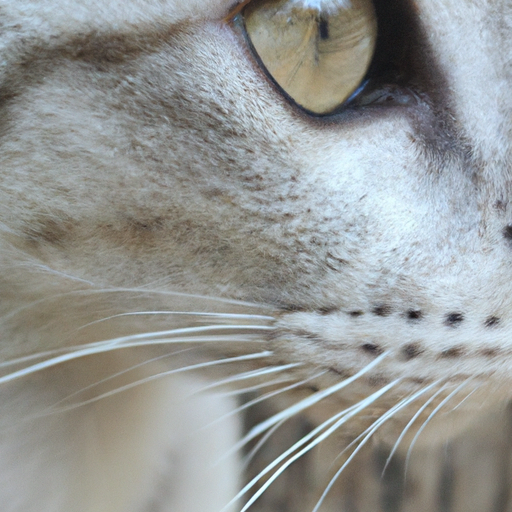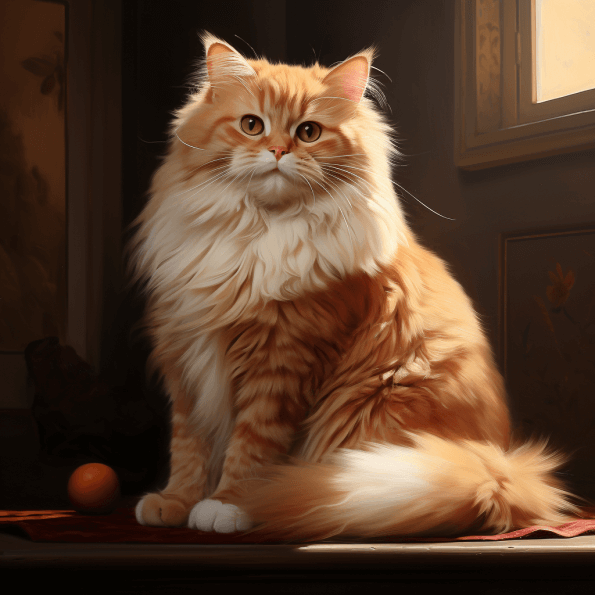Why Do Cats Have Whiskers?
Before you start laughing off the topic, think about this vast, mind-boggling but none-the-less fascinating subject: Why do cats have whiskers? Well, buckle up because this journey is about to take you through the mesmerizing yet subtle world of feline biology and anatomy. And not just that, it will also give you insights into the mystery of why your little furry friend uses these extra-long, magical hairs, also known as ‘whiskers’. Get ready to unlock some exclusive kitty secrets that would deepen your connection with your fellow companion in a whole new way. Good luck decoding the cat world!
Anatomy of Cat Whiskers
Understanding the anatomy of a cat’s whiskers can be quite fascinating, especially for pet owners or general animal enthusiasts.
Structure of whiskers
A cat’s whiskers, also known as vibrissae, are thick, rigid hairs that protrude from the sides of a cat’s muzzle. Unlike regular fur, which has a primarily protective and insulating function, whiskers have a sensory purpose. These sensory tools are deeply rooted and packed with nerves at their follicular base, making them highly sensitive to external stimuli.
How many whiskers do cats have?
Contrary to popular belief, the number of whiskers on a cat’s face isn’t arbitrary. A typical feline has about 24 whiskers, divided evenly across both cheeks. Each cheek consists of four rows of whiskers, with an average of six in each row. Remember, this is an average, and some cats may have more or fewer whiskers.
Location and arrangement of whiskers on a cat’s face
The most recognizable whiskers are those on either side of a cat’s nose. But did you know that’s not the only place you’d find them? Cats also have whiskers over their eyes, behind their front legs, and on their chins. They are arranged in a pattern that maximizes their ability to pick up sensory information.
The Purpose of Cat Whiskers
You might wonder why these seemingly decorative features serve such critical functions. Let’s dig into that.
Navigation in the dark
One of the primary functions of cat whiskers is to help them navigate in low-light conditions. They act as a feline’s radar system, allowing them to have additional spatial awareness in the dark.
Measuring gaps and spaces
Owing to their width, approximately matching the cat’s body width, whiskers are effective indicators of whether or not the cat can fit through narrow spaces. Quite handy for those adventurous feline escapades!
Detection of prey
Whiskers are great hunting aids, allowing cats to detect the presence, size, and location of their prey, particularly in dim lighting. It’s like having a personal GPS system for hunting purposes.
Communicating moods
Believe it or not, whiskers can also offer insights into a cat’s mood. For instance, when a cat is relaxed, their whiskers will stay relatively still, but when frightened or excited, their whiskers might twitch or push forward.

Cat Whiskers and Sensory Perception
This feature is not just structural but also perceptual. Cat whiskers convey significant information regarding the environment to the cat’s nervous system.
Whiskers as touch receptors
Each whisker functions as a touch receptor. When anything comes into contact with a whisker – say, the breeze from an open window, the vibration from a mouse scurrying by – it triggers a sensory reaction.
Whisker vibrations and air currents detection
Whiskers are so sensitive that they can also detect tiny changes in air currents, helping cats anticipate obstacles or dangers in their environment, mostly without needing to see them.
Interpretation of signals in the cat’s brain
The base of each whisker connects to the cat’s brain via a large nerve. When a whisker feels something, it sends an appropriate signal to the brain, thus interpreting the interaction as information about the surroundings.
Health and Whisker Loss in Cats
While whiskers are durable, certain health conditions can impact them.
Common causes of whisker loss
Whisker loss or fracture in cats can be due to several factors. These include excessive grooming, nutritional deficiencies, dermatitis, stress, or even certain diseases affecting the hair follicles.
Consequences of whisker loss
While whisker loss might not cause physical discomfort, it does impact a cat’s ability to navigate and sense its environment accurately. Cats may become disoriented or anxious without their sensory whiskers.
Whisker stress and its symptoms
Another concern is whisker stress, a condition in which a cat’s whiskers are repeatedly touched or moved, causing discomfort. A cat experiencing whisker stress might appear anxious or show reluctance to eat from a bowl that brushes against its whiskers.

Whiskers and Cat Breeds
Interestingly, whisker traits can differ among breeds in terms of length and prominence.
Variations in whisker length across breeds
The Maine Coon breed, known for its large size and shaggy coat, often has noticeably long and robust whiskers. Conversely, the sleek Siamese often sports more delicate, finer whiskers.
Breeds known for prominent whiskers
Certain breeds, like the Norwegian Forest Cats and Siberians, are known for their long, prominent whiskers, a trait that mirrors their rugged, outdoorsy nature.
Genetic influences on whisker characteristics
Most of these characteristics are dictated by genetics, with certain breeds naturally predisposed to have whiskers of distinct lengths or strengths.
Myths and Misconceptions about Cat Whiskers
Despite what we know, some myths persist.
Misbelief about whiskers and balance
It’s commonly believed that whiskers help maintain a cat’s balance. While cats do have a remarkable sense of balance, it’s due more to their unique skeletal and muscular structure rather than their whiskers.
Cultural myths related to cat whiskers
Some cultures believe that cat whiskers bring good luck, while others believe the opposite, viewing them as omens of misfortune.
Common misconceptions about trimming cat whiskers
A dangerous misconception that persists is that it’s okay to trim a cat’s whiskers. However, trimming whiskers can cause disorientation and fear in cats and should be strongly discouraged.
Whisker Fatigue in Cats
Just like any other sensory organ, whiskers can also become overworked.
What is whisker fatigue?
Whisker fatigue is a fairly recent term used to describe sensory overload in a cat’s whiskers. It typically occurs when your cat’s whiskers are touched too much – say, while drinking from a narrow water dish or eating from a deep bowl.
Symptoms of whisker fatigue
Symptoms may include refusing to eat or drink, even when hungry, pawing at food and knocking it to the floor to eat, or acting aggressive around food.
Prevention and remedies for whisker fatigue
Using wide and shallow dishes for food and water, or ones specially designed with a whisker relief area, can help prevent whisker fatigue.
The Differences in Whiskers Between Cats and Other Animals
Cats aren’t the only ones sporting these sensory tools.
Comparisons with canine whiskers
While dogs also have whiskers, they aren’t as reliant on them as cats are. Dog whiskers are useful for sensing close-by objects, but their effectiveness pales compared to a cat’s sophisticated use.
Similarities with other feline species
Other feline species, including lions, tigers, leopards, all make use of whiskers in much the same way as domestic cats do, helping them navigate their environment and hunt efficiently.
Unique aspects of cat whiskers
Nevertheless, the level of sensory information transmitted by domestic cats’ whiskers is believed to be far more detailed than what other animals experience, thanks to their more refined nervous system connection to their brain.
Whiskers and Cat Behavior
Beyond their practical uses, whiskers also play a part in a cat’s typical behaviors.
Whiskers during play and hunting
Cats often fan their whiskers out and angle them forward during play or hunting. This increases their sensory perception and allows them to react more rapidly to changes in their prey’s position.
Whiskers as a means of communication
Cats can also use their whiskers to communicate. For instance, a cat might pull its whiskers back against its face when it feels threatened, or push them forward when it’s curious or exploring new territory.
Whisker movement and emotional states
Whisker movement often indicates a cat’s emotional state. A content, relaxed cat will have its whiskers held out to the side, whereas a terrified or aggressive cat will pin its whiskers back to its face.
The Significance of Whiskers to Veterinarians
Cat whiskers are also crucial for veterinarians’ examinations and diagnosis.
Whisker examination during check-ups
During regular check-ups, vets often inspect a cat’s whiskers for any signs of changes or abnormalities, like breakage or loss, which could indicate health issues.
Whiskers as indicators of health issues
Issues like dermatitis, fleas, fungal infections, or even certain systemic diseases might be inferred from changes in a cat’s whiskers.
The role of whiskers in veterinary science
Despite being minute in structural terms, whiskers have a significant role in veterinary science, providing valuable clues about a cat’s overall condition and specific health issues, hence their importance in a typical check-up.
And that sums up the fascinating world of cat whiskers. Next time you glance at your feline friend, we hope you consider these extraordinary features with newfound respect and understanding.







